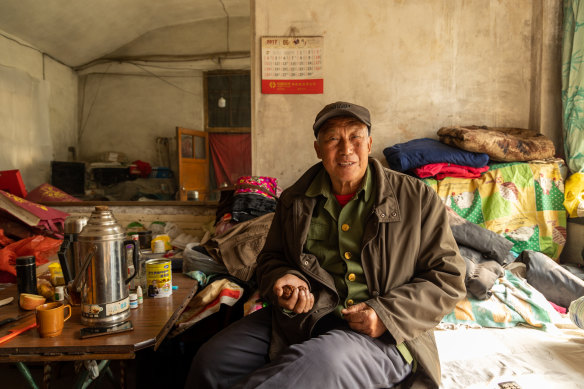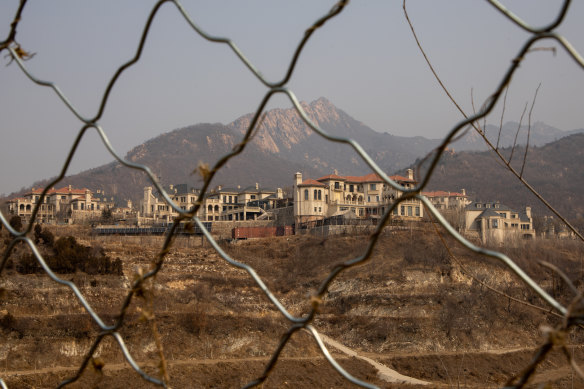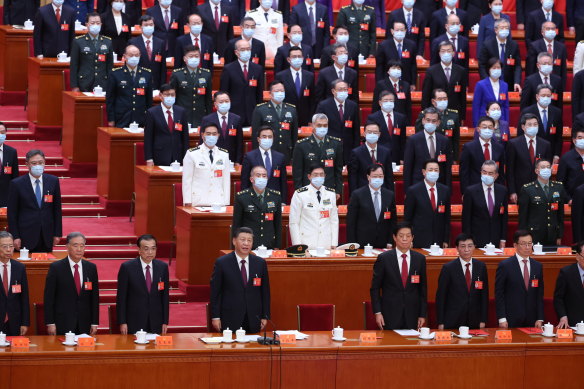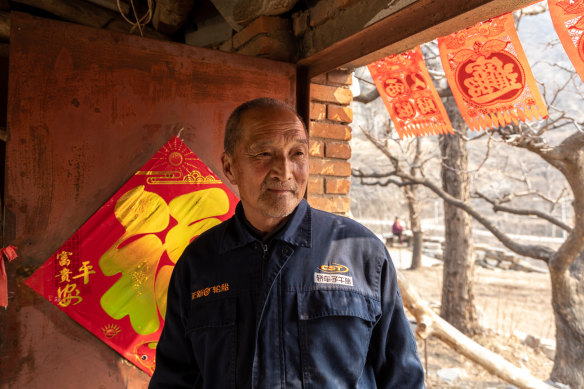Liu lives in a crumbling village. Nearby a compound of luxury villas remain untouched
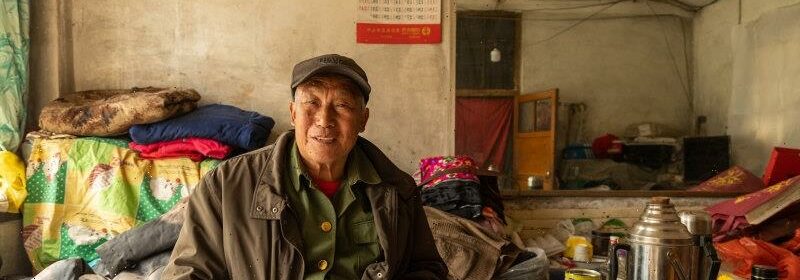
Liu Huaiseng is 73 and willing to work, but nobody will hire him. He lives in Tianjiayu in northern China. The village is hundreds of years old and has 700 residents, but its buildings are crumbling. Nearby grand real-estate developments have failed to materialise in a story that is familiar across the country.
“What support? Nobody cares,” says Liu. “Did you see the streets in the village? Some people came and painted the walls, then they claim it was a prosperous village. It’s an image project. They also built a public toilet for us. But it’s not usable in winter as there is no water or electricity.”
Tianjiayu is only 90 kilometres from Beijing. Such is the gulf between rural and urban incomes in Xi Jinping’s China that it might as well be on the other side of the country. Up to 40 per cent of China’s population lives in the regions. On average, they earn only a third of those in the city.
Tianjiayu villager Liu Huaisheng. Credit:Sanghee Liu
That divide has plagued China’s leaders since Mao Zedong, who ordered city elites to do manual labour in the fields that stretched from Xinjiang in the north and Guangdong in the south. Xi, China’s president, has his own vision of income distribution – he calls it “common prosperity”. Every year at China’s National People’s Congress, which starts on Sunday in Beijing, up to 3000 delegates pass legislation to help lift living standards in rural China. The Chinese Communist Party claims that it has lifted 800 million people out of poverty over the past four decades – an extraordinary economic feat – but other stimulus packages have been hijacked by local officials or saddled investors and villages with debt while wiping out the farmland that once kept them nourished.
“Our land was taken over for building highways and villas more than 10 years ago. We were given 30,000 yuan ($6400) per person back then,” says Liu. “They also promised to pay for our pension insurance. But after the land was taken, no one cares about us.”
Liu does not blame the intentions of the central government in Beijing, but he believes the implementation has been destroyed by corruption at the local level.
“The central government actually provided a lot, but it was embezzled by people in the county and township government,” he claims. “Now the only source of income for us is from growing Ma walnuts. There is no development opportunity in villages.”
Liu recalls digging an 8-metre trench each day through the Hai River as a young worker for the Party.
“Compared to those who retired in the cities, did we make less contribution in the past decades? It’s not fair,” he says. “They always criticise human rights in the United States, but are human rights in China reasonable?”
Liu’s public criticism is strong. It is also rare in a country that regularly crushes dissent. But his frustration points to a wider concern about the future of the villages that once fed China that are now being left to grow old and vacant.
Luxury villas in Tianjiayu villageCredit:Sanghee Liu
In the shadow of the mountains in Tianjiayu, a sprawling compound of luxury villas designed as country homes for the city elite now stand empty. Like thousands of property developments across the country, the construction brought a temporary flurry of investment into communities on the outskirts of China’s metropolises but have now been abandoned under a pile of bad debts.
China’s leaders last year launched a crackdown on the property sector. Their resolve already appears to be waning ahead of Sunday’s National People’s Congress.
“Beijing’s hardline stance that ‘property is for living in, not for speculation’ was notably omitted in the December Politburo meeting, at a time when policy support packages were also being rolled out,” said Capital Economics lead economist Louise Loo.
“Since then, we’ve seen a regulatory policy inflection in the property sector, as authorities looked to contain the negative spillovers associated with a sharper property sector downturn.”
Chinese leaders and delegates attend the closing ceremony of the 20th National Party Congress in 2022. Credit:Getty
Loo suggests the intervention last year had unintended consequences by triggering a confidence crisis in the sector, forcing Beijing to pump the brakes on cracking down on dodgy builders to get investment moving again in an industry that accounts for 70 per cent of all household wealth.
The dilemma for regulators has been that some of China’s rural residents have also invested in these debt-laden companies hoping to get their foot into the property market through high-rise apartments in ghost cities. Hundreds protested when Evergrande was on the brink of bankruptcy last year, forcing authorities to wind back some of their threats out of fear that taking down the bad actors will put more financial pressure on already stretched households.
The delegates gathered in Beijing next week will be hoping China’s post-COVID economic bounce will help ease some of that economic pressure. It’s been 13 years since the world’s second-largest economy hit an annual growth rate of above 10 per cent. Loo estimates the target this year will be about half that.
“While officials could abandon numeric growth targets altogether, the recent return of mentions of ‘quantity’ on top of the usual rhetoric of ‘high-quality growth’ in official statements suggests that the government is keen to project a smooth post-pandemic recovery process,” she says.
The target, which will be set by Xi during his work report speech on Sunday, is more than just a rhetorical flourish. It guides local officials on how much they should pump into 31 provinces across a country that has twice the population of Europe. A high target (above 5 per cent) will mean the central government expects local officials to fuel the economy by approving new power plants or announcing construction projects. A lower target will mean the national executive wants local officials to take wait until the post-COVID surge rolls through and guard against over-stimulating the economy.
Xijingyu villager Zhou WeiwenCredit:Sanghee Liu
In Xijingyu northern China, Zhou Weimin says the young people who came to live in the village during the pandemic have left to return to their lives in the city.
“Today, no young people are willing to work on the farm, not to mention managing the orchard. It’s still old villagers who take care of fruit trees,” says the 75-year-old former fruit grower.
But he is less critical of the government than some of his fellow villagers. He remembers a past when food was scarce and life was built on hard toil.
“People in China enjoy free life today,” he says. “We don’t have to worry about food and drink.”
Zhou is more thankful than not for the authoritarian hand of the Chinese government.
“The pandemic policies were something only possible in China,” he says. “In other capitalist countries, even if they hoped for it, they couldn’t realise it. They don’t have such power.”
Get a note directly from our foreign correspondents on what’s making headlines around the world. Sign up for the weekly What in the World newsletter here.
Most Viewed in World
From our partners
Source: Read Full Article
